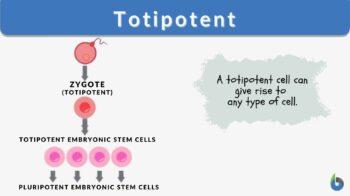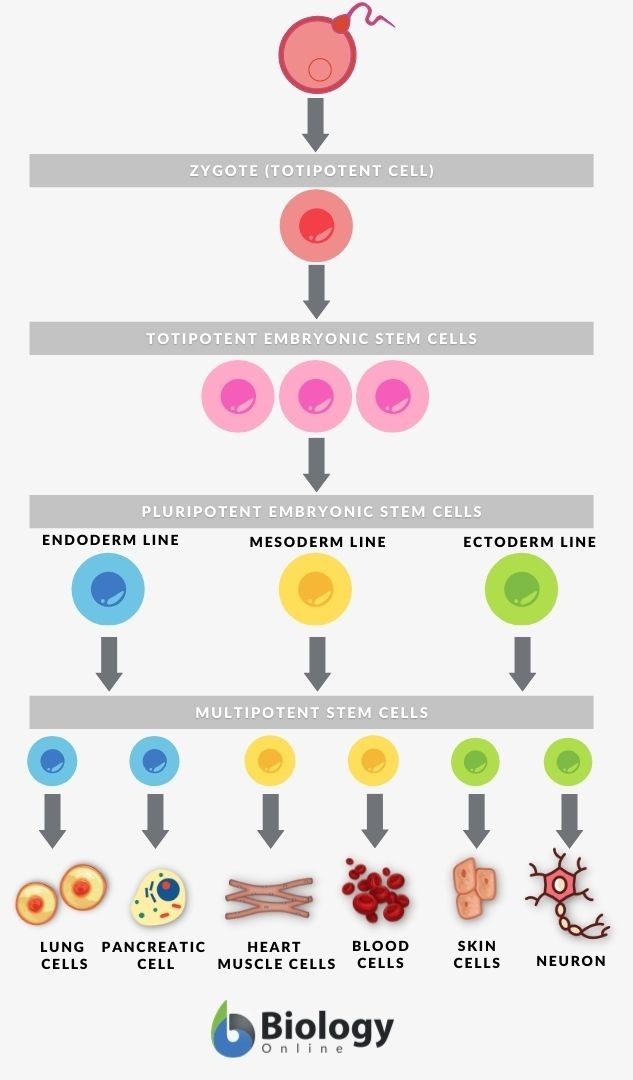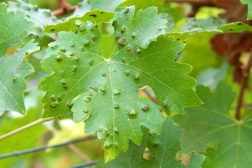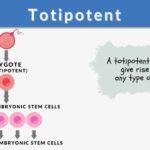
Totipotent
adj., [təʊˈtɪpətənt]
Definition: complete power to transform into any type of cell
Table of Contents
Totipotent Definition
What is totipotent? In general terms, totipotency is defined as the ability of a single cell to produce a completely fertile, species-specific adult.
In biology, the word “totipotent” describes a cell with the capacity to divide and produce all the differentiated body cells, embryonic as well as extraembryonic. In animals, zygotes and spores are examples of totipotent cells. In plants, cuttings of the plants or the callus of the plant that develops into a fully matured plant is also an example of totipotent cells.
Totipotent means having the ability to differentiate into all cell types. For example, the zygote and early embryonic cells are totipotent since they can differentiate into any cell type during development. Etymology: toti- » from Latin “tōtus”, meaning “total” and “potent” means “power”.
Totipotency in Animals
Totipotent cells are a kind of stem cells that are self-sufficient entities. Characteristically, stem cells should have two basic properties:
- The capacity of unrestricted self-regeneration
- Capability to differentiate into at least one type of progeny cells
Self-renewal and differentiation are the two distinct stem cell characteristics that make them suitable for therapeutic application. The ability and extent of differentiation is the differentiating factor in different types of stem cells namely, totipotent, pluripotent, multipotent cells.
Accordingly, the stem cells that can generate all types of cells, embryonic as well as extraembryonic cells are known as totipotent stem cells. Embryonic stem cells are totipotent. A zygote, an example of totipotent stem cells, can produce extraembryonic cells like placental cells. Further, during embryonic development, stem cells retain their ability to of differentiating into adult cells however, they lose their ability to produce extra-embryonic cells. Such cells are known as pluripotent cells. While certain stem cells can distinctly produce only cells of a particular lineage, such stem cells are known as multipotent stem cells. Hematopoietic stem cells that can only produce blood cells — not other types of cells like lung cells or liver cells — are known as multipotent cells.
One may wonder, where can totipotent cells be found?
Totipotent cells can be found in abundance during the early embryonic development stage and hence these cells are also referred to as embryonic stem cells. Embryonic stem cells are totipotent. While adult stem cells like the bone marrow cells are a type of multipotent stem cells.
If arranged sequentially in a developmental cycle, totipotent cells are followed by pluripotent cells followed by the multipotent cells (Figure 1)

Totipotency in Plants
Interestingly, by a theory, plants exhibit cellular totipotency wherein each plant somatic cell possesses the necessary genetic makeup and capability to grow into a whole plant. Thus, cellular totipotency is the ability of a single plant cell to produce a whole new plant autonomously as a single process.
Although in reality, not all plant cells are totipotent and require specific conditions to develop into a full plant. The difference between totipotent cells and pluripotent cells is in Table 1.
Table 1: Difference between Totipotent cells and Pluripotent cells | |
|---|---|
| Totipotent cells | Pluripotent cells |
| Define totipotent: Stem cells that have the ability to produce and differentiate into any type of body cells, embryonic as well as extraembryonic cells | Define pluripotent: Stem cells have the ability to produce and differentiate into only one of the three germ layer cells |
| Have the capacity to differentiate into embryonic as well as extraembryonic cells | Have the capacity to produce and differentiate into three germ layers of the embryo |
| Cells have high differentiation potential | Cells have low differentiation potential |
| Spores and Zygote are examples of the totipotent cells | Induced pluripotent cells (iPS) are an example of pluripotent stem cells |
| Totipotent cells are formed early in the developmental phase | Pluripotent cells are derived from the totipotent cells |
| Less explored and used in research | Highly explored and widely used in research |
Data by Dr. Amita Joshi of Biology Online.
Therapeutic Potential of Totipotent Stem Cells
Totipotent stem cells are an ideal approach for the treatment of diseases. These cells are the most versatile cells that have the ability to produce and differentiate into any type of body cell. A zygote formed after the fusion of the gametes is basically a single totipotent cell that divides and results in the formation of embryonic germ layers (ectoderm, mesoderm, and endoderm) and the supporting extraembryonic cells (cytotrophoblast and a syncytiotrophoblast layer of the placenta).
In a zygote, totipotency is retained till the 16-cell stage, after this stage, cells lose the ability of totipotency and differentiate into specialized cells. Studies suggest that totipotent cells have the ability to differentiate into almost 200 types of body cells. These findings reinforce the possibility of their usage for tissue regeneration.
Totipotent cells can be used to generate desired differentiated cells in-vitro that can be transplanted to the damaged tissue, thus restoring the damaged tissue functioning.
Totipotency is in-vitro exhibited by the animal as well as plant cells. The totipotent cells when grown in-vitro (i.e., in the laboratory) to obtain desired set of cells are affected by several factors. Some of them are as follows:
- Tissue or explant source: Organ and its physiological state and age, explant quality, the season of collection of explant.
- Nutrient media and its constituents: Growth regulators, micronutrients, carbon, and nitrogen source in the media affects the totipotency.
- Environmental conditions of the culture: temperature, pH, humidity, available gases in the culture environment, light affect the totipotent cells in the media.
Totipotent Examples
Are human cells totipotent? In humans, early embryonic cells possess totipotency i.e., from zygote to blastomere stage. Similarly, in other animals, the zygote is an example of totipotency. While, in plants, meristematic cells found in the cambium and apices of roots and stem are totipotent cells. In plants, these cells can be used to produce clones of the plant.
Try to answer the quiz below to check what you have learned so far about totipotent.
References
- Condic M. L. (2014). Totipotency: what it is and what it is not. Stem cells and development, 23(8), 796–812. https://doi.org/10.1089/scd.2013.0364
- Fehér A. (2019). Callus, Dedifferentiation, Totipotency, Somatic Embryogenesis: What These Terms Mean in the Era of Molecular Plant Biology?. Frontiers in plant science, 10, 536. https://doi.org/10.3389/fpls.2019.00536
- Hu K. (2019). On Mammalian Totipotency: What Is the Molecular Underpinning for the Totipotency of Zygote?. Stem cells and development, 28(14), 897–906. https://doi.org/10.1089/scd.2019.0057
- Mitalipov, S., & Wolf, D. (2009). Totipotency, pluripotency and nuclear reprogramming. Advances in biochemical engineering/biotechnology, 114, 185–199. https://doi.org/10.1007/10_2008_45
©BiologyOnline.com. Content provided and moderated by Biology Online Editors.








